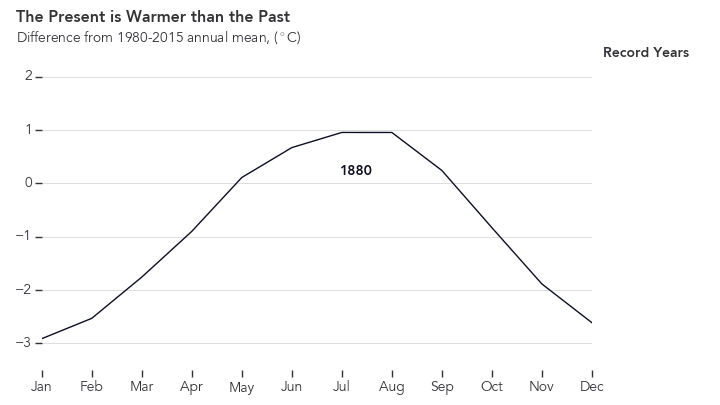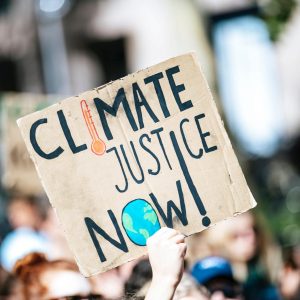Verkhoyansk, a small town in the Arctic Circle reported a temperature of 100.4 Fahrenheit on June 20, 2020, setting an all-time record. Indeed, the last 5 years have been the hottest in recorded history. We are also seeing, in the wake of COVID-19, that the consequences of profligate production and consumption of fossil fuels are causing more trouble than just rising temperatures and massive climate disruption.
The New York Times reported on June 18 that, “Pregnant women exposed to high temperatures or air pollution are more likely to have children who are premature, underweight or stillborn, and African-American mothers and babies are harmed at a much higher rate than the population at large, according to sweeping new research examining more than 32 million births in the United States.”
A Harvard study in 2018 reports that, “Student fixed effects models using 10 million PSAT-takers show that hotter school days in the year prior to the test reduce learning, with extreme heat being particularly damaging and larger effects for low income and minority students.”
We are standing — nervously, restlessly, unsure — at a crossroads. This is not the first time we have stood at such a crossroads. In 1989, Bill McKibben published “The End of Nature,” the first book about global warming for a general audience. McKibben thought that simply stating the problem would provoke people to action. Earth Day 1990, following the publication of his book, was thought to be the launch of a decade of the environment.
President Bush called the ’90s “the era for clean air.” Others called the ’90s “the turnaround decade” in which people will either stop polluting or face environmental disaster. That certainly didn’t happen, but it was not an unreasonable assumption. Twenty years earlier, the first Earth Day catalyzed significant policy action including the establishment of the EPA, and signing the Clean Air, Clean Water and the Occupational, Safety and Health Acts into law, undertaken by Republican President Richard Nixon, “to foster the growth of a strong American economy and industry while improving human health and the environment.”

Fifty years ago we chose to act. Thirty years ago we chose not to act. And in those last 30 years, since we knew that CO2 was causing climate change, humans have emitted more carbon by burning fossil fuels than in all the centuries that came before. Today, the choice is upon us again. Rare are the moments in human history when we bear witness to and have the opportunity to simultaneously tackle three pervasive and systemic challenges. This is one of those moments.
COVID-19 split open the reality of structural racism in this country as we witnessed tens of thousands of our most vulnerable — the people already suffering from poverty and disproportionate pollution-related health challenges — sicken and die in much greater numbers than people farther removed from high pollution levels. Historical and present-day structural inequities have left BIPOC exposed to far greater environmental health hazards than whites. Then the killing of George Floyd catapulted people into the streets to protest and demand reform in policing tactics — a visceral expression of multi-generational trauma happening through systemic and centuries-old racism.
COVID-19 crumpled the economy as so much daily activity shut down, revealing that small businesses, rural communities and the nearly 50% of American workers who live paycheck to paycheck are uniquely vulnerable to economic disruption.
The pandemic has also revealed a compelling glimpse of a planet where carbon emissions and pollution levels dropped precipitously. There are clear skies above LA and Delhi (the world’s most polluted city) as GHG emissions from cars, construction and factories have ground to a halt. Even more, megacities from Beijing to Sao Paulo are not only seeing clearer horizons, but the residents are actually experiencing healthier environments as air quality index (ADI) levels plummet from life-threatening to the lowest numbers in decades.
So now, again, we can choose to act. Can we make dirty fuels the whale oil of our generation? As we recover from the economic crisis, can we invest in small business and rural resilience, drive the clean energy economy and build a re-imagined low carbon and equitable economy?
A unique opportunity presents itself as fossil fuel companies lose their strength and power.

Quartz states that “Oil and gas companies might never recover from Covid-19:”
“Indeed, although the pandemic also triggered deep job losses for the clean energy industry, it also provided an opening for renewables to surge even as oil and gas flailed. With electricity demand down, power companies have looked for the cheapest way to serve their customers: Wind and solar energy fit the bill. The US is on track to get one-fifth of its power from renewable sources this year, a record, and the first time ever renewables will beat out coal.”
The New York Times reported on May 13 that, “In a First, Renewable Energy Is Poised to Eclipse Coal in U.S.” In just the first four and a half months of this year, America’s fleet of wind turbines, solar panels and hydroelectric dams have produced more electricity than coal on 90 separate days — shattering last year’s record of 38 days for the entire year. On May 1 in Texas, wind power alone supplied nearly three times as much electricity as coal did.”
Up here in the northern part of New York, investments in the clean energy economy are poised to help jumpstart the economy. State authorities and agencies charged with the equitable implementation of New York’s nation-leading Climate Leadership and Community Protection Act (CLCPA) are devoting substantial resources into the region while leveraging private sector capital. The CLCPA sets a new standard, codifying New York’s goal of 70% renewable energy by 2030, while also cutting greenhouse gas emissions 85% by 2050.
The CLCPA places substantially increased focus and priority on meeting the needs of low- to moderate-income workers and families. At a minimum 35% of the benefits of the State’s clean energy and energy efficiency investments will benefit disadvantaged communities by increasing access to (and benefits from) clean energy for those communities and low-income consumers and creating quality jobs in the green economy and ensuring a “just transition” and protecting ordinary workers as our economy shifts to more sustainable production.
ANCA is choosing to act by driving this transition. Our work with communities and businesses to develop resilient energy systems, including grid and transportation infrastructure, build on rural traditions of self-reliance while providing significant environmental and social benefits. And ANCA’s Clean Energy Director, Jerrod Bley, has just been appointed as one of nine representatives from Environmental Justice communities throughout the state to the Climate Justice Working Group. These nine individuals will join four state representatives to help guide implementation of New York’s Climate Act, giving the North Country a direct voice in shaping the way this landmark legislation equitably impacts our region.
